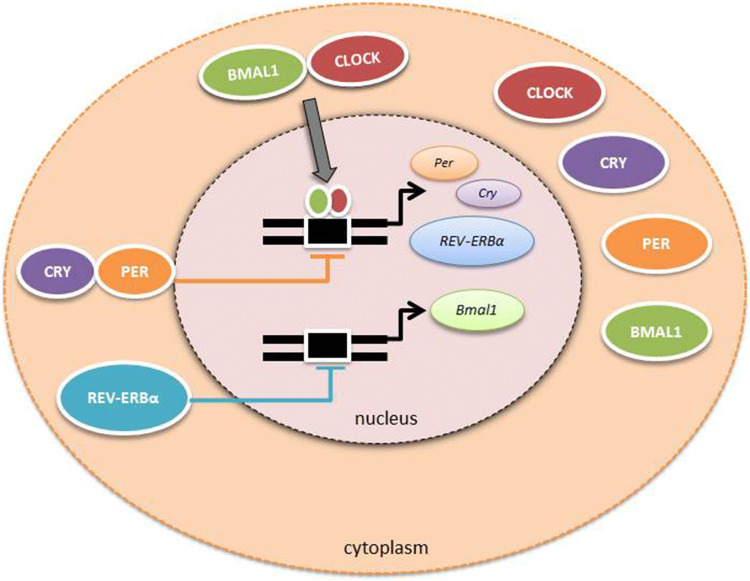Fig. 2.
The molecular circadian clock. Both central and peripheral clocks use the same molecular machinery to “time” the day. Interlocking repressing and activating transcriptional and translational feedback loops culminate in the approximately 24-h rhythmic expression and activity of a set of core clock genes in each organ. CLOCK and BMAL1 increase transcription of period (PER1/2) and cryptochrome (CRY1/2) genes. As protein levels increase, PER and CRY associate and translocate into the nucleus, repressing CLOCK/BMAL1, thereby inhibiting their own transcription. Enzymatic degradation of PERIOD and CRYPTOCHROME proteins provides a delay mechanism prior to the onset of the next transcriptional cycle. The expression of positive factors, CLOCK and BMAL1, and negative factors, PER and CRY, are in antiphase to one another, providing circadian timing at the molecular level. Outputs from the molecular clock are generated through transcription or repression of target genes. BMAL1 is regulated by rhythmic interaction with REV-ERBα

